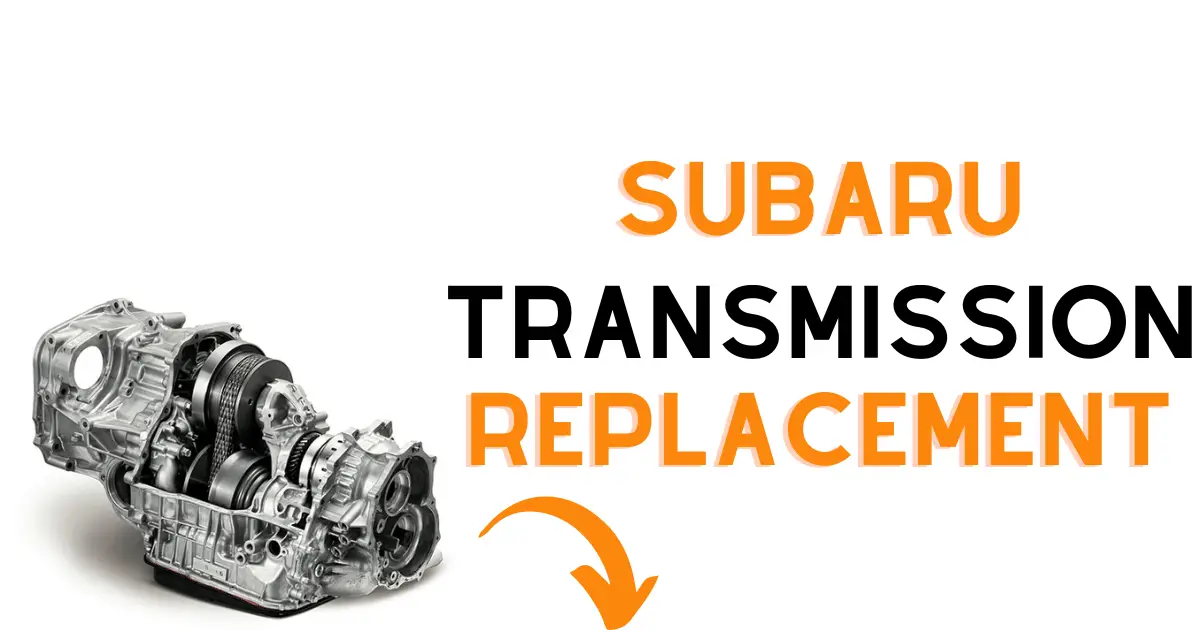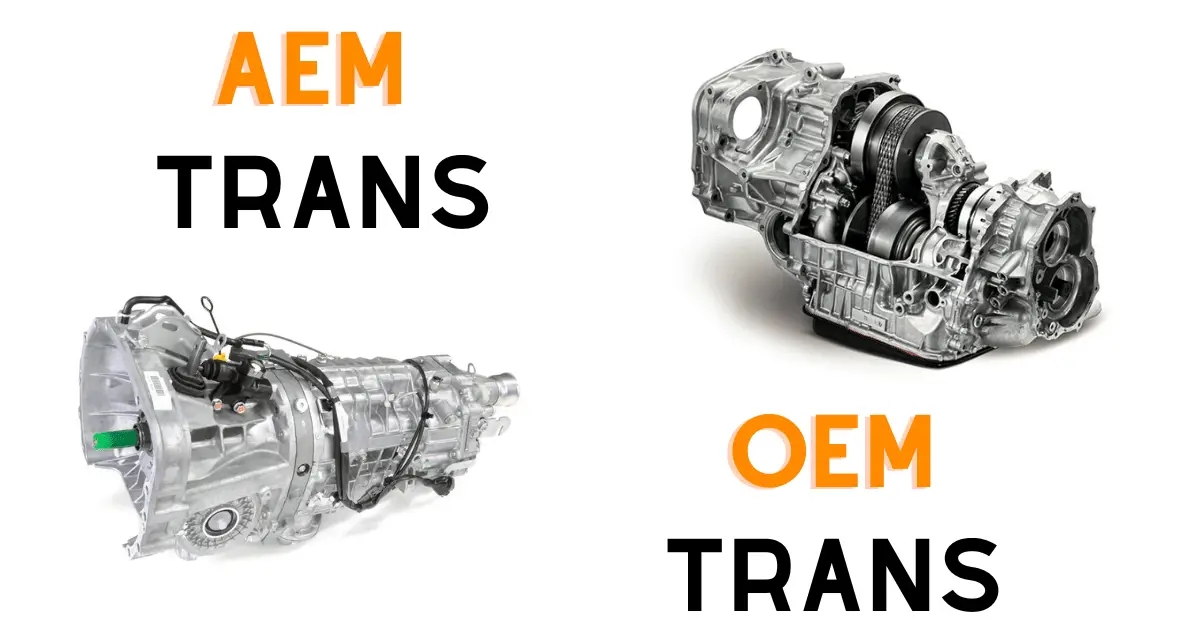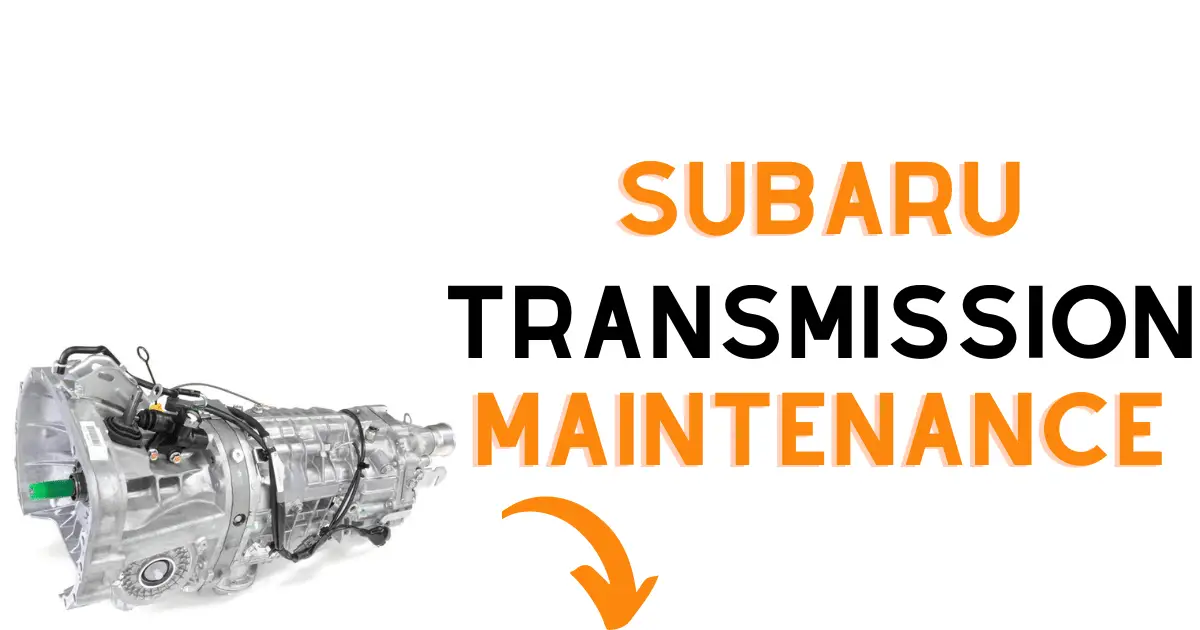Subaru is a well-liked automobile manufacturer with a long-standing history. Despite their reputation for dependability, Subaru cars are not exempt from transmission issues. If the transmission of a Subaru vehicle breaks down, the repair can be quite expensive. The price tag for the replacement of a Subaru transmission may vary based on various elements.
Need tools for your project? Toolbox, a tool rental marketplace, might be worth a look.
According to a search of various sources, the cost of a Subaru transmission replacement can range from $1,800 to over $10,000. The cost will depend on the type of transmission, the specific model of the vehicle, and the labor fees charged by the mechanic. It is important to note that transmission repair costs can also vary depending on the severity of the problem.
If you are experiencing transmission problems with your Subaru, it is important to take your vehicle to a reputable mechanic for an accurate diagnosis. While the cost of a transmission replacement may seem daunting, it is important to address the issue as soon as possible to avoid further damage to your vehicle.
Related reads:
– Are Subarus Expensive To Fix and Maintain? Yes and No
– Is It Worth Fixing Subaru Gaskets? Yes and No (Here’s Why)
– Subaru Clutch Replacement Cost: What You Need to Know
– Subaru Starter Replacement Cost: What You Need to Know
Understanding Transmission Replacement

Replacing a Subaru transmission can be a costly and time-consuming process. However, it is sometimes necessary to ensure that the vehicle runs smoothly. In this section, we will discuss the different types of Subaru transmissions, signs of a failing transmission, and the extent of damage and repair options.
Types of Subaru Transmissions
Subaru offers several types of transmissions, including CVT, automatic, and manual transmissions. CVT (Continuously Variable Transmission) is a type of automatic transmission that uses a belt and pulley system to provide an infinite number of gear ratios. Automatic transmissions use a hydraulic system to shift gears automatically, while manual transmissions require the driver to shift gears manually.
Signs of a Failing Transmission
There are several signs that your Subaru transmission may be failing. These include slipping gears, delayed engagement, strange noises, and burning smells. If you notice any of these signs, it is important to have your vehicle inspected by a qualified mechanic as soon as possible to prevent further damage.
Extent of Damage and Repair Options
The extent of damage to a Subaru transmission can vary greatly depending on the cause of the problem. In some cases, a simple repair may be all that is needed, while in other cases, a complete transmission replacement may be necessary. Remanufactured and rebuilt transmissions are also options, but these may not always be the best choice depending on the extent of the damage.
In terms of cost, the price of a Subaru transmission replacement can range from several thousand dollars to over $10,000, depending on factors such as labor fees, parts prices, and the specific model of the vehicle. It is important to get an accurate estimate from a qualified mechanic before proceeding with any repairs or replacements.
In conclusion, understanding the different types of Subaru transmissions, signs of a failing transmission, and the extent of damage and repair options can help you make informed decisions when it comes to maintaining and repairing your vehicle’s transmission.
Cost Factors for Subaru Transmission Replacement
Replacing a Subaru transmission can be a costly affair, and the total cost depends on several factors. In this section, we will discuss the major cost factors that affect the price of Subaru transmission replacement.
Labor Costs and Replacement Parts
The cost of labor and replacement parts are the two main factors that determine the total cost of Subaru transmission replacement. Labor costs can vary depending on the location and the mechanic’s experience, but on average, it can range from $500 to $1500. Replacement parts can also vary depending on the model and the type of transmission, but it can cost anywhere from $1000 to $5000.
Cost of New vs. Rebuilt vs. Remanufactured

When it comes to replacing a Subaru transmission, you can choose between a new, rebuilt, or remanufactured transmission. A new transmission is the most expensive option, and it can cost anywhere from $4000 to $8000. A rebuilt transmission is a more affordable option, and it can cost anywhere from $2000 to $4000. A remanufactured transmission is the most affordable option, and it can cost anywhere from $1000 to $3000.
Impact of Model Year and Transmission Type
The model year and the type of transmission can also affect the total cost of Subaru transmission replacement. Automatic transmissions are generally more expensive to replace than manual transmissions. The newer the model year, the more expensive the replacement cost will be. On average, the replacement cost for a Subaru transmission can range from $2500 to $6000.
In conclusion, several factors affect the cost of Subaru transmission replacement, including labor costs, replacement parts, the type of transmission, and the model year. It is essential to consider these factors when estimating the total cost of Subaru transmission replacement.
Subaru Dealership vs. Independent Service Centers
When it comes to replacing a Subaru transmission, there are two main options for service: the dealership or an independent service center. Each option has its own advantages and disadvantages, and it’s important to consider these factors before making a decision.
Comparing Cost and Quality of Service
One of the main factors to consider when choosing between a dealership and an independent service center is cost. In general, independent service centers tend to be less expensive than dealerships. This is because dealerships have higher overhead costs, such as rent and employee salaries.
However, it’s important to note that cost isn’t the only factor to consider. The quality of service is also important. Dealerships have access to the latest diagnostic equipment and factory-trained technicians, which can result in a higher quality of service. Independent service centers may not have access to the same equipment or expertise, which can lead to lower quality repairs.
Warranty Coverage and Limitations
Another factor to consider when choosing between a dealership and an independent service center is warranty coverage. If your Subaru is still under warranty, it’s important to choose a service center that is authorized to perform warranty repairs.
Dealerships are authorized to perform warranty repairs and can provide warranty coverage for both parts and labor. Independent service centers may not be authorized to perform warranty repairs, and even if they are, they may only be able to provide warranty coverage for parts, not labor.
It’s also important to note that if you have an extended warranty, there may be limitations on where you can have your Subaru transmission repaired. Be sure to check the terms of your warranty before choosing a service center.
In summary, when it comes to replacing a Subaru transmission, there are pros and cons to both dealerships and independent service centers. Dealerships may provide a higher quality of service, but at a higher cost. Independent service centers may be less expensive, but may not have access to the same equipment or expertise. When choosing a service center, it’s important to consider factors such as cost, quality of service, and warranty coverage.
Maintenance to Prevent Transmission Issues

Regular maintenance and fluid changes are essential for keeping a Subaru’s transmission in good working condition. Transmission fluid is the lifeblood of the transmission system, and it is recommended to have it changed every 30,000 to 60,000 miles.
Regular Maintenance and Fluid Changes
Subaru owners should follow the manufacturer’s recommended maintenance schedule to ensure the transmission is in good condition. Regular maintenance includes fluid flushes, filter changes, and inspections. A transmission fluid flush replaces all the old fluid with new fluid, while a filter change replaces the filter that catches debris and contaminants.
Overheating can also cause transmission issues, so it is important to keep the engine and transmission cool. This can be done by regularly checking the coolant level and ensuring the radiator and transmission cooler are clean and functioning correctly.
Early Detection of Transmission Problems
Early detection of transmission problems can save a lot of money in the long run. Some signs of transmission problems include slipping gears, grinding or shaking sensations, and strange noises. If any of these symptoms occur, it is important to have the transmission inspected by a professional mechanic as soon as possible.
Regular maintenance and early detection of transmission problems can help prevent expensive transmission repairs or replacements. It is important to take care of the transmission to ensure the longevity of the vehicle.
DIY vs. Professional Transmission Replacement
When it comes to Subaru transmission replacement, car owners have two options: DIY or professional. Both approaches have their pros and cons, and it’s important to consider them carefully before making a decision.
Evaluating the DIY Approach
DIY transmission replacement can be a cost-effective solution for those who have the necessary skills, tools, and time. However, it’s important to note that this is a complex and time-consuming process that requires a lot of attention to detail. One mistake can lead to costly damage and even safety hazards.
Car owners who choose the DIY approach should be prepared to invest a significant amount of time in researching the process, gathering the necessary tools and parts, and following the manufacturer’s instructions carefully. They should also be comfortable working with heavy machinery, electrical systems, and hydraulic systems.
When to Seek Professional Help
For car owners who don’t have the necessary skills, tools, or time to tackle a transmission replacement on their own, seeking professional help is the best option. Professional mechanics have the expertise, experience, and equipment needed to perform the job safely and efficiently.
However, it’s important to note that professional transmission replacement can be costly. According to Kelley Blue Book, a new transmission can cost between $2,900 and $7,300. Labor fees can add several hundred dollars to the total cost.
Car owners who choose to seek professional help should research and compare different mechanics, read reviews, and ask for quotes. They should also ask about warranties, guarantees, and certifications to ensure they’re getting quality service.
In conclusion, both DIY and professional transmission replacement have their advantages and disadvantages. Car owners should carefully evaluate their skills, tools, and time before deciding which approach to take. Those who choose the DIY approach should be prepared to invest a significant amount of time and effort, while those who seek professional help should be prepared to pay a premium for quality service.
Frequently Asked Questions
What is the average cost range for replacing a Subaru transmission?
The average cost range for replacing a Subaru transmission can vary depending on the model and the service provider. According to the search results, the cost can range from $2,900 to $7,300 for a new transmission. However, different service providers may also have variations in their prices. It is best to get a quote from a reputable mechanic to get a more accurate estimate.
How does the model year of a Subaru impact the transmission replacement cost?
The model year of a Subaru can impact the transmission replacement cost. Generally, older models may have a lower cost for transmission replacement compared to newer models. This is because newer models may have more advanced technology and require more specialized parts, which can increase the cost of replacement.
What are the common signs indicating a Subaru transmission needs replacement?
Some common signs that a Subaru transmission needs replacement include slipping gears, difficulty shifting gears, strange noises, and leaking fluid. If you notice any of these signs, it is important to have your transmission checked by a mechanic as soon as possible to prevent further damage.
Are there specific Subaru models known for transmission issues?
According to the search results, some specific Subaru models are known for transmission issues. For example, the Subaru Outback and the Subaru Legacy have had reported transmission problems in the past. However, it is important to note that not all models of Subaru will experience transmission issues.
What is the expected lifespan of a Subaru transmission?
The expected lifespan of a Subaru transmission can vary depending on various factors, such as driving habits, maintenance, and the model of the vehicle. Generally, a Subaru transmission can last between 100,000 to 150,000 miles. However, regular maintenance and prompt repairs can help prolong the lifespan of the transmission.
Can transmission repairs be a cost-effective alternative to full replacement for a Subaru?
In some cases, transmission repairs can be a cost-effective alternative to full replacement for a Subaru. However, it is important to note that this will depend on the severity of the issue and the cost of the repair. It is best to consult with a trusted mechanic to determine if transmission repair is a viable option for your specific situation.